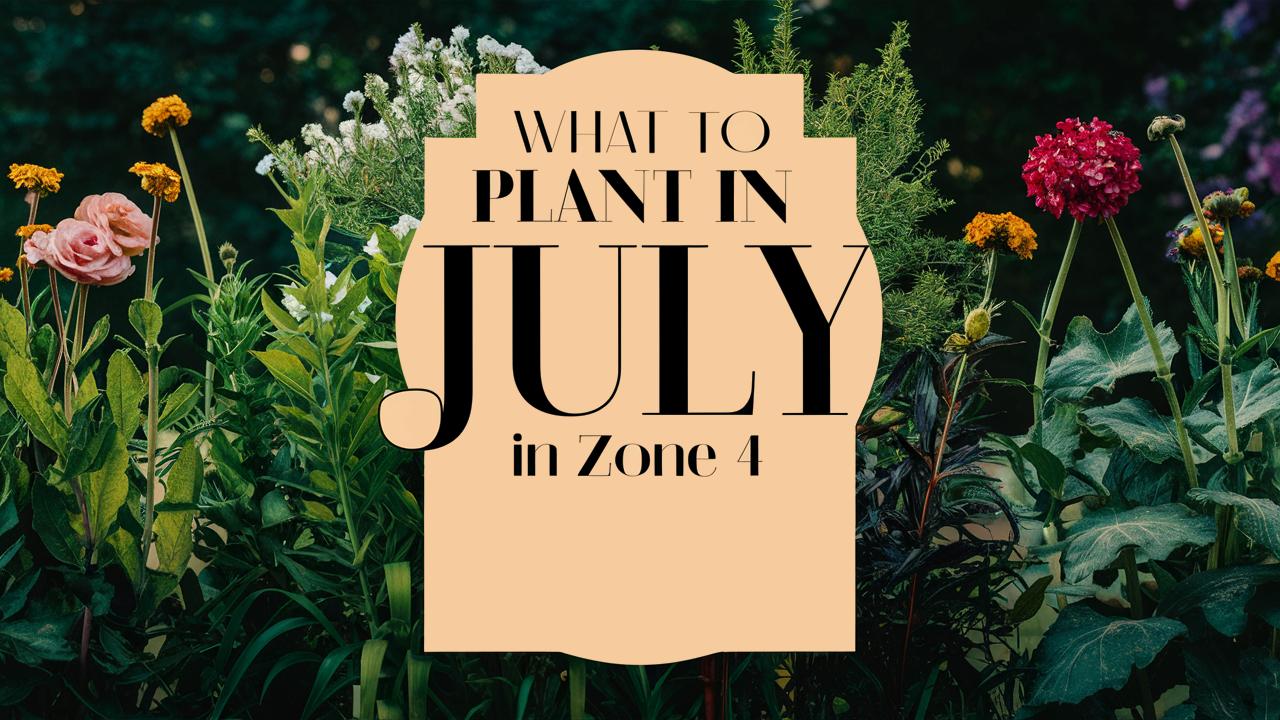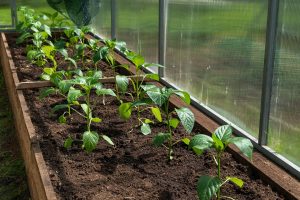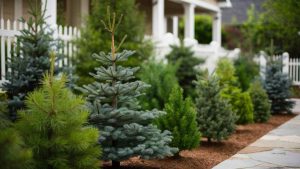In this guide, we’ll explore the best plants to sow during July in Zone 4, detailing each plant, its temperature tolerances, ideal planting conditions, and useful tips for successful gardening.
Vegetables To Plant
July is a great time to start a second crop in your vegetable garden. The growing season extends into the fall, making it possible to cultivate a variety of delicious vegetables that thrive in the cool days of late summer and early fall.
Beans (Bush and Pole)
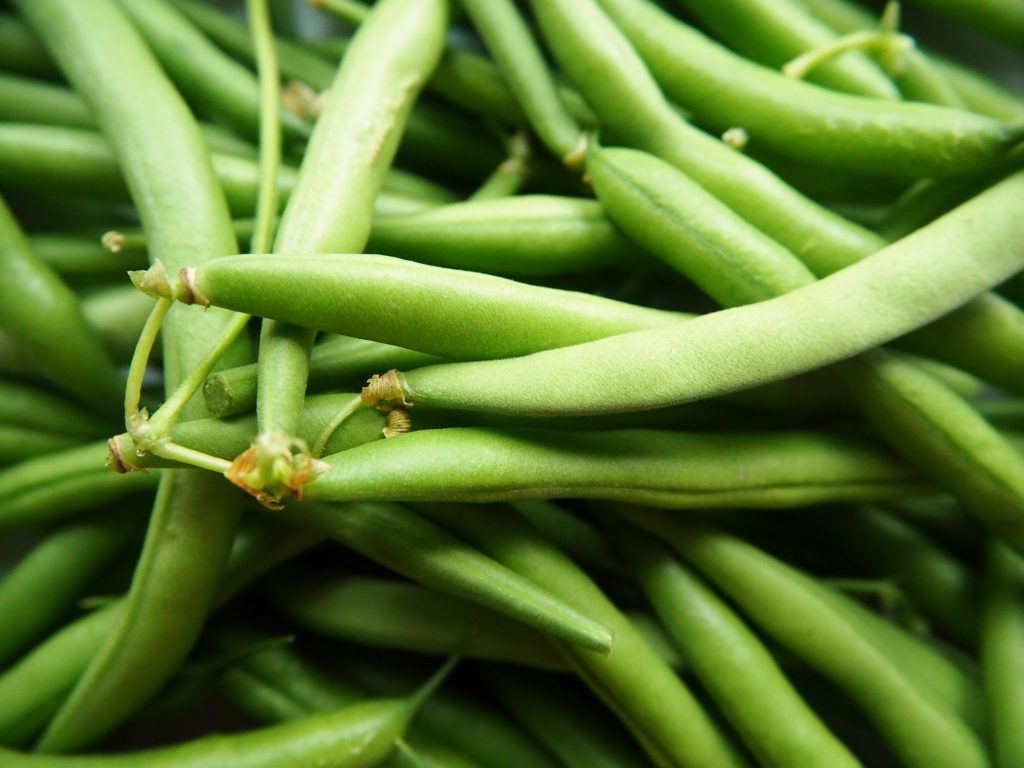
Beans are a fantastic vegetable to plant in July, particularly bush and pole varieties. They thrive in warm soil and grow rapidly, often ready for harvest within a month or two after planting. In Zone 4, be mindful that mid-July is the best time to plant beans to ensure they mature before frosts hit in the fall.
Temperature Tolerance: Beans prefer temperatures between 70°F and 90°F but can tolerate cooler nights.
Growing Tips: Ensure the soil is well-draining and rich in organic matter. Regular watering will keep the plants producing throughout the summer.
Carrots
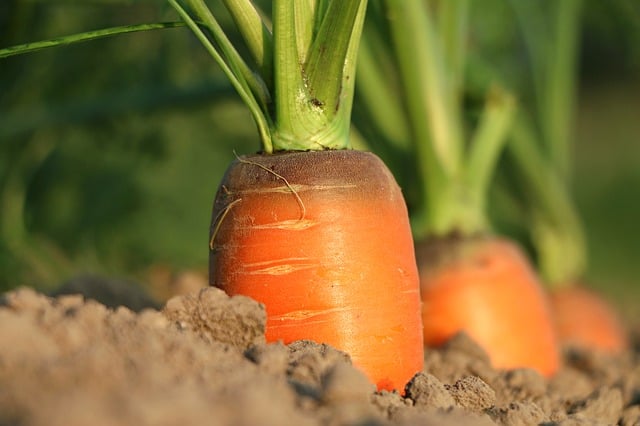
Carrots can be sown directly into the ground in July in Zone 4. While they are primarily a spring crop, when planted now, they can mature into a flavorful harvest come fall, often sweeter after a light frost.
Temperature Tolerance: Ideal temperatures for carrots are around 60°F to 70°F, making July an excellent sowing period.
Growing Tips: Carrots thrive in loose, sandy soil and need consistent moisture. Thin seedlings appropriately to avoid overcrowding.
Cucumbers
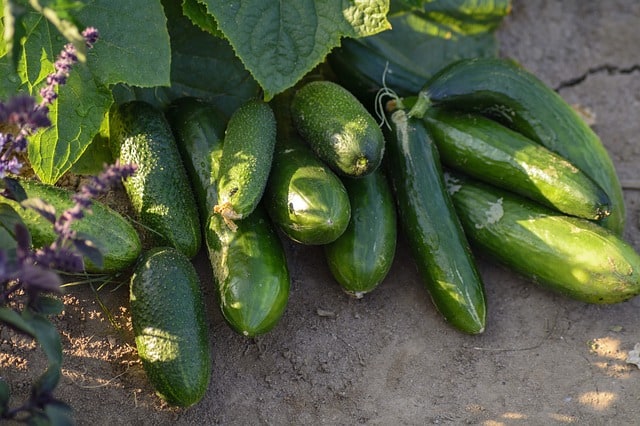
July is prime time for sowing cucumbers in Zone 4. This warm-season crop can be seeded directly into the garden or transplanted after the risk of frost has passed.
Temperature Tolerance: Cucumbers prefer temperatures between 70°F and 95°F, and they love full sun.
Growing Tips: Provide trellises for vining varieties, water regularly, and harvest young for the best flavor and texture.
Radishes
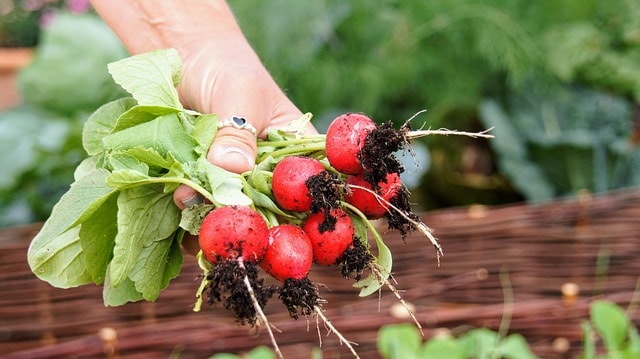
Radishes are quick-growing veggies perfect for July planting. These root vegetables mature quickly and can be ready to harvest in just three to four weeks, allowing multiple planting cycles throughout summer.
Temperature Tolerance: They thrive in cooler temperatures, ideally between 50°F and 75°F.
Growing Tips: Sow radish seeds in well-draining soil and thin seedlings for better growth. They can also deter pests, making them great companion plants.
Beets

Beets can be sown in July to take advantage of the cooler weather of fall for optimal flavor development. They’re resilient and can pull through lighter frosts.
Temperature Tolerance: Best grown in temperatures from 50°F to 75°F.
Growing Tips: Ensure they are planted in well-drained soil, amend with compost for enhanced growth, and keep the soil moist for optimal germination.
Kale

Kale is another hardy green that can be planted in July. By seeding it now, you set the stage for a robust fall harvest, as kale can tolerate frost and becomes sweeter after exposure to cooler temperatures.
Temperature Tolerance: Kale thrives in temperatures from 60°F to 70°F.
Growing Tips: Space plants adequately as they require good air circulation. Regular harvesting encourages more leaf growth.
Turnips
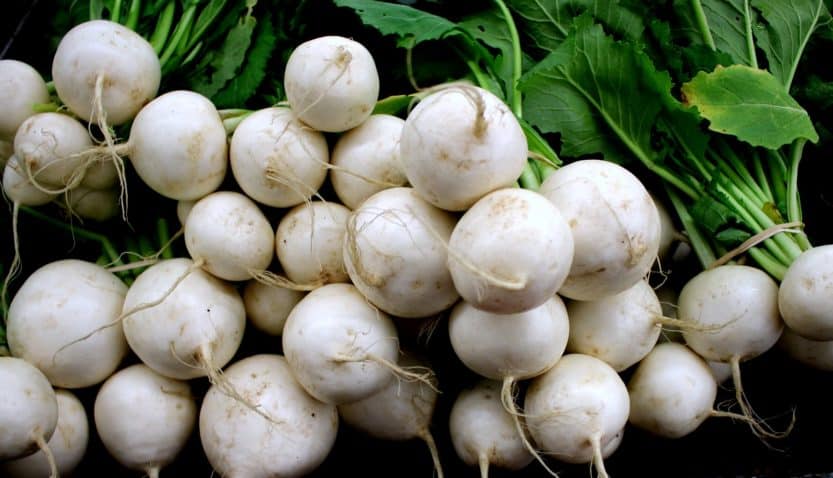
Turnips are sown in July and can yield a nutritious crop by fall. They grow quickly and offer both edible greens and roots.
Temperature Tolerance: These root crops thrive in temperatures ranging from 50°F to 75°F.
Growing Tips: Plant in fertile, well-drained soil. Turnips tend to bolt if stress occurs, so maintain consistent moisture.
Spinach
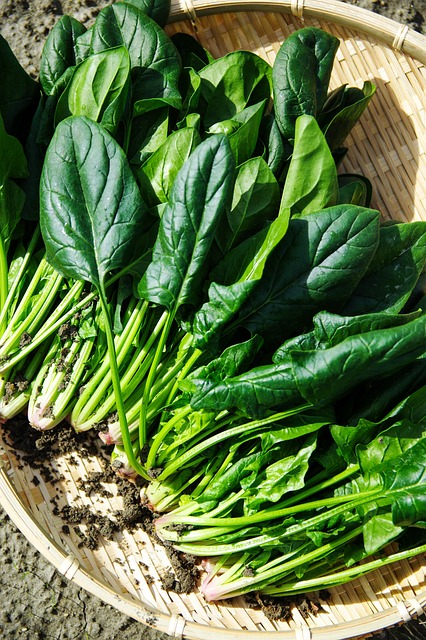
July is a suitable time to plant a second round of spinach, especially varieties bred for hot weather. Spinach is well-suited for the cooler temperatures of fall.
Temperature Tolerance: Ideal growing temps range from 50°F to 60°F, which makes mid-summer planting excellent as the weather begins to cool.
Growing Tips: Provide some shade during hotter periods and ensure soil remains moist for improved germination.
Zucchini
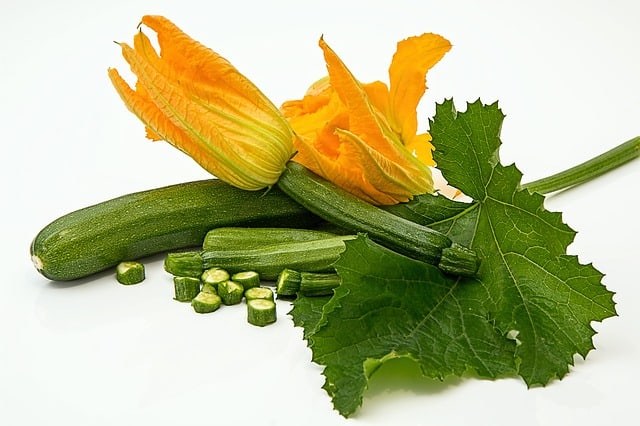
Another favorite summer vegetable, zucchini can be easily sown in July. It’s a prolific producer, often yielding large crops if cared for properly.
Temperature Tolerance: Zucchini prefers temperatures of 70°F to 90°F.
Growing Tips: Space plants adequately and encourage regular harvesting to prevent overripening, which can slow plant production.
Late Season Brassicas (Broccoli and Cabbage)

While July isn’t the traditional month for planting broccoli and cabbage, it can work for fall crops in Zone 4. Starting these seedlings will allow them to mature in cooler weather, enhancing their flavor.
Temperature Tolerance: Best grown from 60°F to 70°F.
Growing Tips: Transplant seedlings outdoors towards the end of July, allowing them to mature before frost.
Flowers To Plant
July is not just for vegetables; it’s also a prime time for enhancing your garden with vibrant flowers. Planting in July can yield beautiful blooms that may last until frost.
Sunflowers

Sunflowers can be directly sown in July, providing excitement and bursts of color as they rapidly mature. Ideal for attracting pollinators, they can also provide seeds for harvest later.
Temperature Tolerance: Sunflowers thrive in warm temperatures, ideally between 70°F and 85°F.
Growing Tips: Plant in well-drained soil with plenty of sunlight. Support taller varieties to prevent wind damage.
Zinnias

Zinnias are an excellent choice for July planting. These annuals thrive in full sun and offer a stunning array of colors and sizes, perfect for attracting butterflies.
Temperature Tolerance: They flourish in warm weather at temperatures above 70°F.
Growing Tips: Deadhead spent blooms to encourage more flowers, and provide adequate space for airflow between plants.
Cosmos

Cosmos are hardy flowers that bloom quickly from seed. They make excellent cut flowers and thrive in poor soils, requiring minimal maintenance.
Temperature Tolerance: They prefer warm temperatures, typically thriving between 60°F and 100°F.
Growing Tips: Direct sow in sunny areas of the garden and keep them deadheaded for continuous blooms.
Marigolds
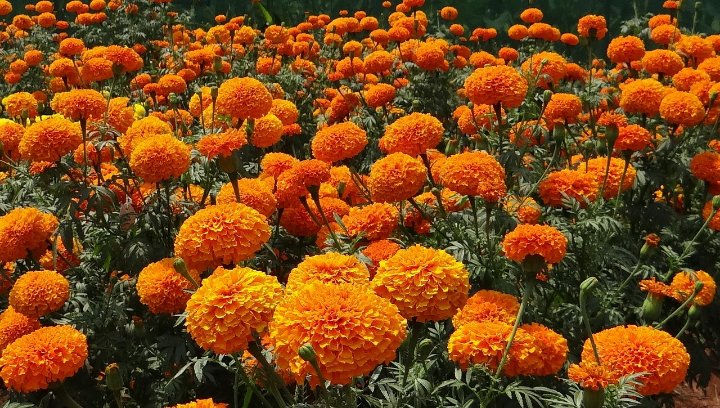
Marigolds are not only beautiful but also act as natural pest repellents. Plant them in July to brighten your garden and keep pests at bay.
Temperature Tolerance: Thrive in warm weather, ideally between 65°F and 90°F.
Growing Tips: Plant in sunny spots and deadhead regularly for prolonged flowering.
Asters
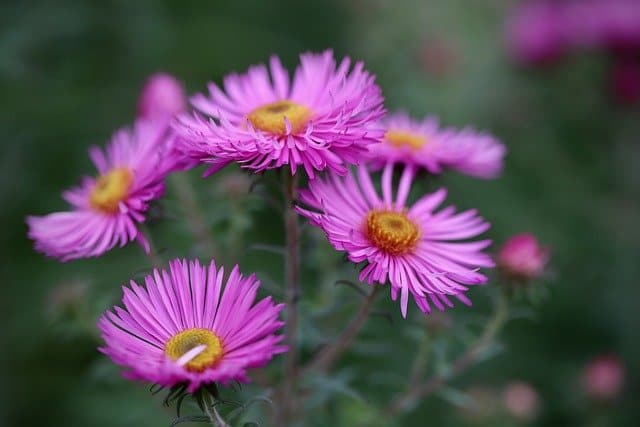
Although a bit slower to germinate, Asters can be started in July for bloom in late summer to fall. Their colorful flowers are valuable for pollinators.
Temperature Tolerance: They prefer moderate temperatures, ideally between 65°F and 75°F.
Growing Tips: Plant in well-draining soil and provide some support for taller varieties.
Snapdragons
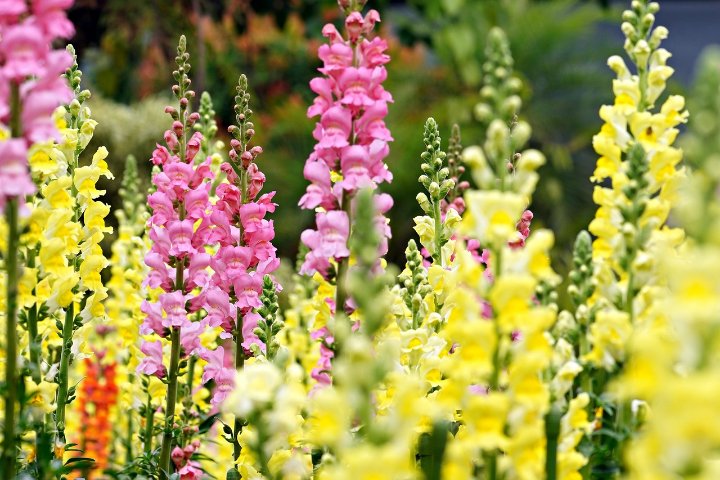
Snapdragons can be sown in July for a late-season display. They are hardy annuals that can survive light frosts and provide vibrant colors.
Temperature Tolerance: Ideally grown in temperatures ranging from 60°F to 70°F.
Growing Tips: Transplant seedlings outdoors towards the end of the month for robust flowering.
Dianthus

Dianthus, or pinks, tolerate cooler temperatures and can thrive when planted in July. Their scented blooms provide vibrant color and are ideal for cutting gardens.
Temperature Tolerance: They prefer cooler weather, ideally between 60°F and 75°F.
Growing Tips: Space adequately for good airflow and deadhead frequently to encourage continued blooming.
Black-eyed Susans
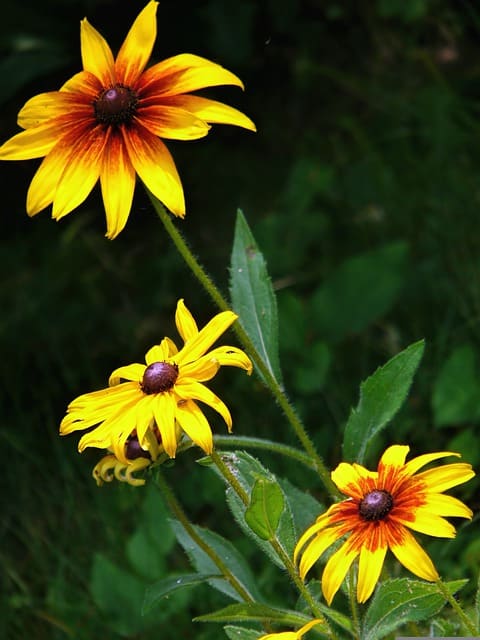
Black-eyed Susans are hardy perennials that can be planted in July. They not only provide stunning blooms but also attract pollinators.
Temperature Tolerance: Thrive best in warm weather conditions, ideally around 70°F to 80°F.
Growing Tips: These flowers prefer full sun and well-drained soil. Deadheading will encourage reblooming throughout the summer.
Evening Primrose
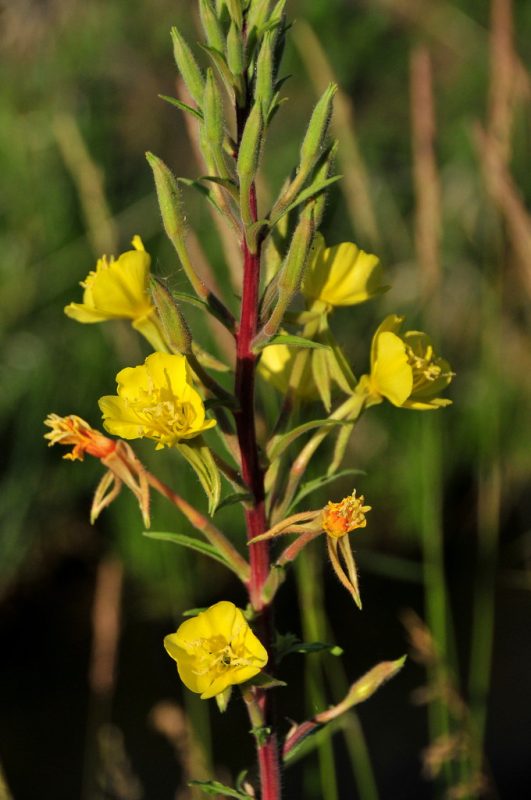
Evening Primrose is a native wildflower that blooms in midsummer, making it an excellent July planting choice. Their bright blossoms open in the evening, hence their name.
Temperature Tolerance: Ideal growth occurs at temperatures between 60°F and 75°F.
Growing Tips: They’re drought-tolerant once established and can grow in poor soils, making them low-maintenace.
Nasturtiums
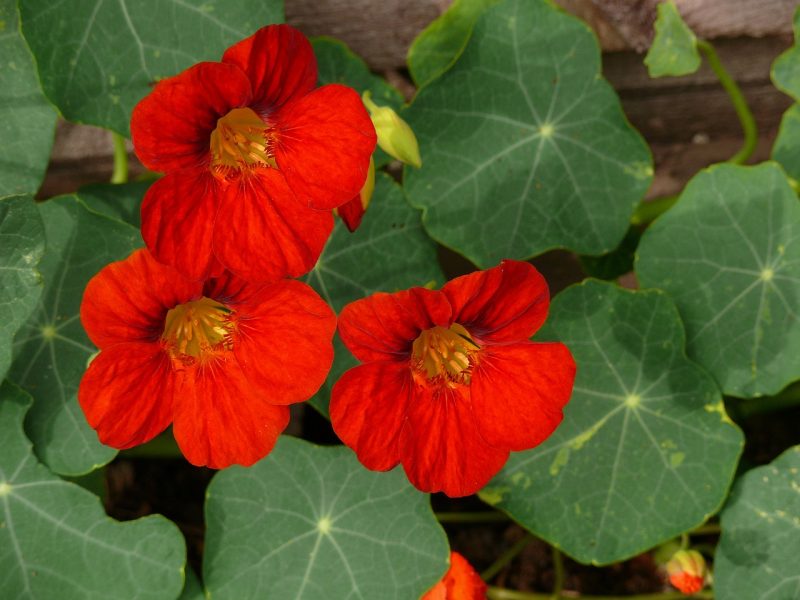
Nasturtiums can be direct seeded in July, thriving in poor soils and providing both beauty and edible foliage and flowers.
Temperature Tolerance: Prefer temperatures in the 70°F to 80°F range and grow best in full sun.
Growing Tips: Use as companions to repel pests; they are edible and can add a peppery flavor to salads.
Herbs To Plant
Herbs add wonderful flavors to your kitchen while promoting a healthy garden ecosystem. July planting in Zone 4 is ideal for numerous perennial and annual herbs.
Basil
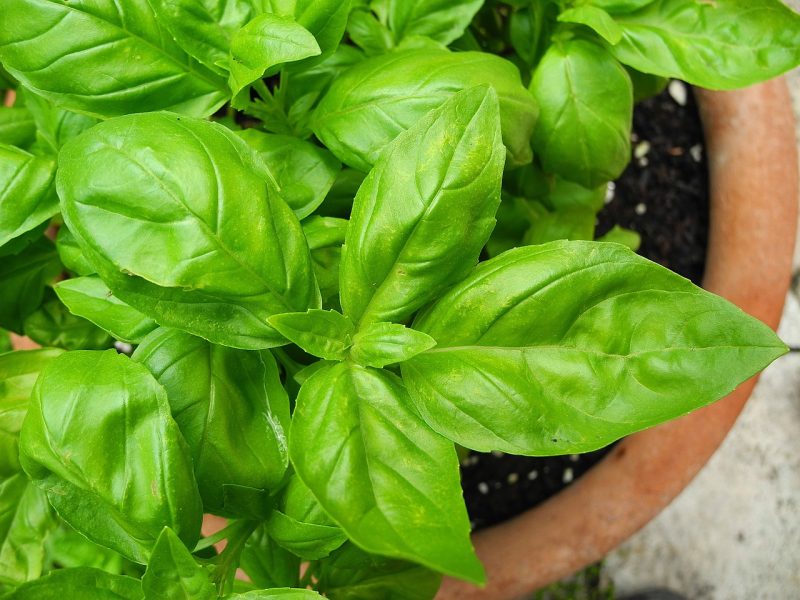
Basil is a popular herb that can be directly seeded in July. It loves warm temperatures and can grow rapidly, providing a delicious addition to various dishes.
Temperature Tolerance: Flourishes in warm temperatures between 70°F and 85°F.
Growing Tips: Ensure well-draining, nutrient-rich soil, and provide a lot of sunlight. Regular pruning encourages bushy growth.
Cilantro
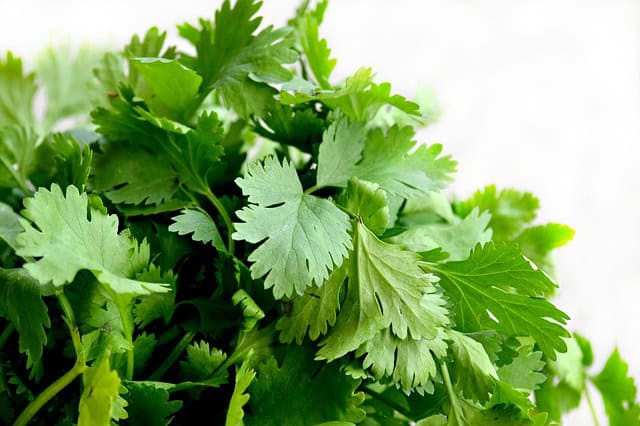
Cilantro can be sown in July for a lovely crop in the cool weather of fall. While it is typically a spring herb, it can grow in cooler temperatures, allowing for a second crop.
Temperature Tolerance: Best in cooler temperatures, ideally below 70°F.
Growing Tips: Keep the soil consistently moist and ensure it gets plenty of light to thrive.
Chervil
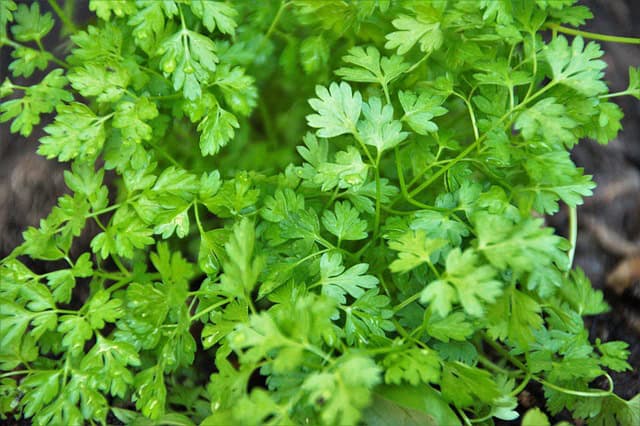
Chervil is another herb ideal for planting in July. This delicate herb prefers slightly cooler conditions and is often used in French cuisine.
Temperature Tolerance: Thrives best in temperatures from 60°F to 70°F.
Growing Tips: Sow seeds directly in the garden, keeping the soil moist. Provide partial shade in hotter weather.
Dill
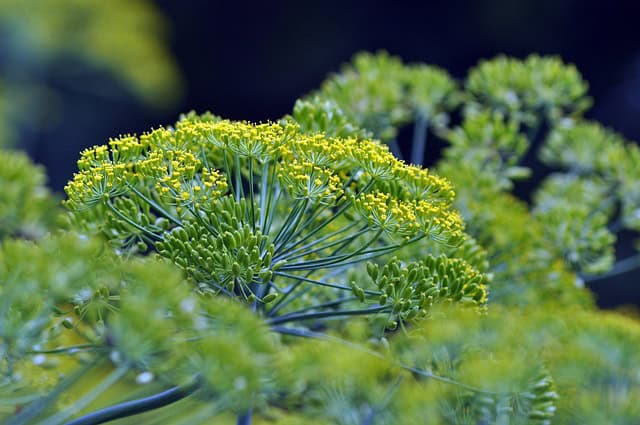
Dill can be directly seeded in July, making it an excellent candidate for a late-season herb garden. It’s attractive to beneficial insects and can thrive through frosty conditions.
Temperature Tolerance: Ideal growth is in temperatures ranging from 60°F to 70°F.
Growing Tips: Space plants adequately as they require air circulation. Harvest young leaves for flavor.
Oregano
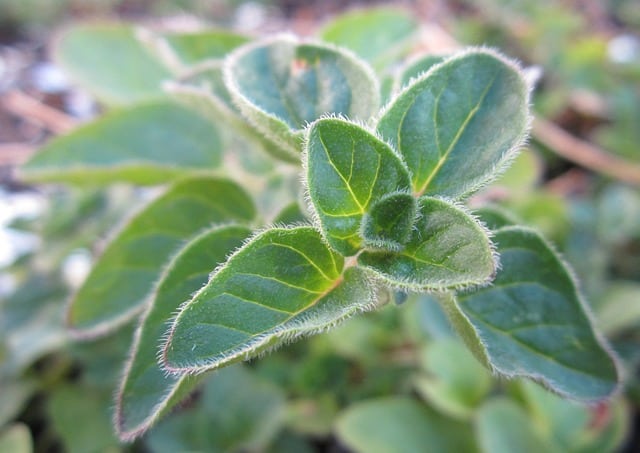
Oregano can be planted in July and is a perennial herb that will provide flavor for years to come. It’s well-suited for the warmer late summer temperatures.
Temperature Tolerance: Prefers warm conditions, ideally between 70°F and 80°F.
Growing Tips: Plant in well-drained soil and ensure it receives full sun. Pruning will promote a bushier plant.
Thyme
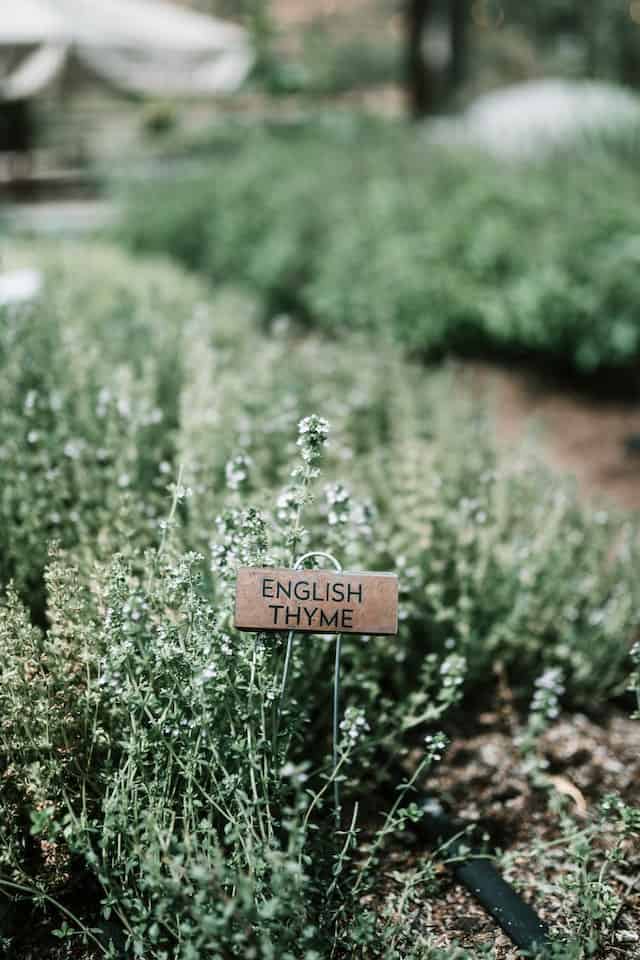
Thyme is a beloved culinary herb that can be planted in July. The warm weather provides perfect growing conditions for this hardy perennial.
Temperature Tolerance: Thrives in warm temperatures, ideally around 70°F to 80°F.
Growing Tips: It prefers well-drained soils; avoid overwatering to prevent root rot.
Fennel
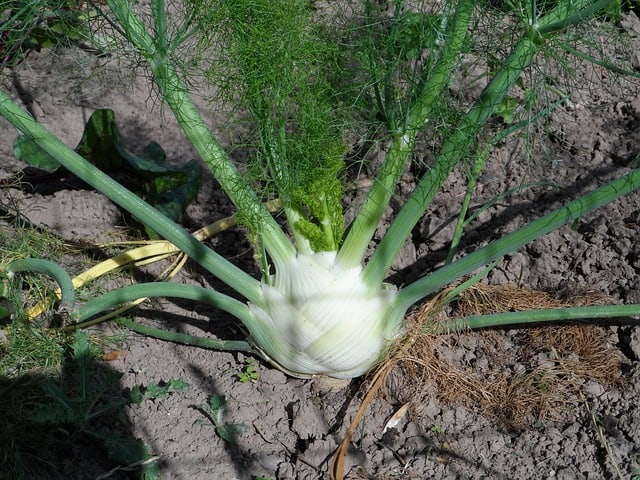
Fennel can be planted in July and is a unique herb with a distinct flavor. The bulbs can be harvested when young, and the fronds provide a delightful addition to salads.
Temperature Tolerance: Favored to grow in warmer temperatures, typically above 70°F.
Growing Tips: Space adequately for air circulation and water consistently to avoid stress.
Parsley
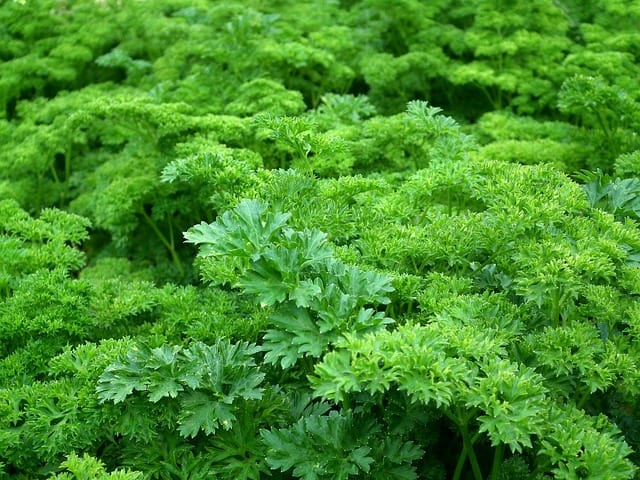
Parsley is versatile and can be planted in July. It’s a biennial herb best grown in cooler weather, making it perfect for late-season harvesting.
Temperature Tolerance: Thrives in cooler conditions, ideally between 60°F and 75°F.
Growing Tips: Keep the soil moist and provide ample sunlight. Regular harvesting encourages bushier growth.
Chives

Chives are a hardy perennial herb that can be planted in July, providing flavor for many dishes. Their grassy leaves grow well in a variety of soils.
Temperature Tolerance: They thrive at temperatures between 60°F and 75°F.
Growing Tips: Plant in clumps in well-drained soil. Regular harvesting will encourage growth and reconstruction.
Mint
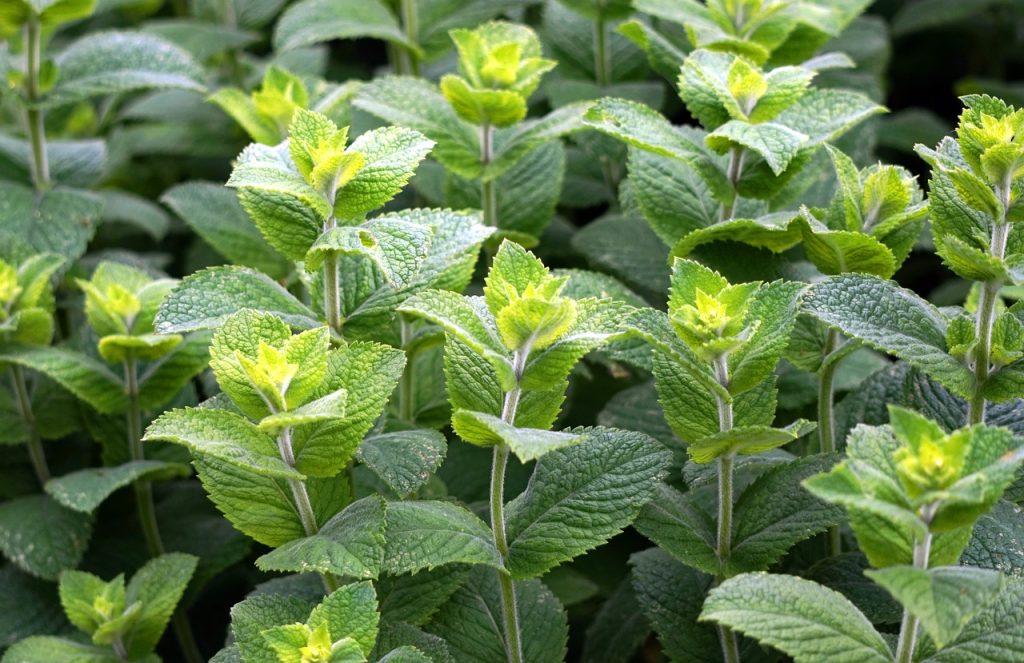
Mint can be planted in July and will flourish in most conditions, producing lush foliage that can quickly spread.
Temperature Tolerance: Ideal growing temperatures range from 65°F to 75°F.
Growing Tips: Consider planting in containers to control its spreading nature. Keep the soil moist and provide partial shade in hotter weather.
Landscape Plants To Plant
July is also a time for enriching your landscape with hardy plants that will thrive in your Zone 4 garden. Choose wisely to ensure a vibrant display that endures through changing seasons.
Daylilies
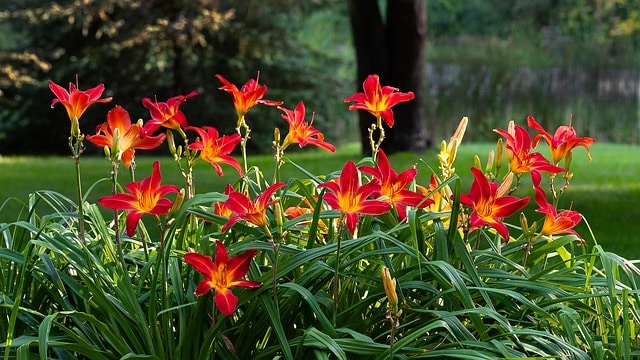
Daylilies are perennials that can be divided and planted in July, revitalizing your landscape with vibrant and varied blooms. They thrive in diverse soil types.
Temperature Tolerance: They prefer temperatures ranging from 60°F to 80°F.
Growing Tips: They require full sun and well-drained soil. They are drought-resistant once established, making them low-maintenance.
Sedum

Sedum, or stonecrop, can be planted in July, providing interesting texture and blooms in later summer. Their drought tolerance makes them excellent for low-maintenance gardens.
Temperature Tolerance: Prefers warmer conditions, ideally between 70°F and 85°F.
Growing Tips: Plant in well-draining soil, and they thrive in full sun. Their fleshy leaves store moisture.
Coneflowers (Echinacea)
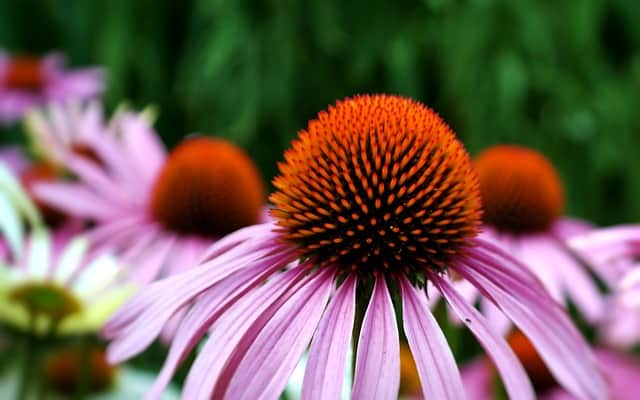
Coneflowers are durable perennials that offer vibrant blooms and are excellent for attracting pollinators. July is the perfect time to add them to your landscape.
Temperature Tolerance: They thrive in warmer temperatures, typically around 70°F to 80°F.
Growing Tips: Plant in full sun and well-drained soil. Deadheading encourages continued blooming.
Russian Sage
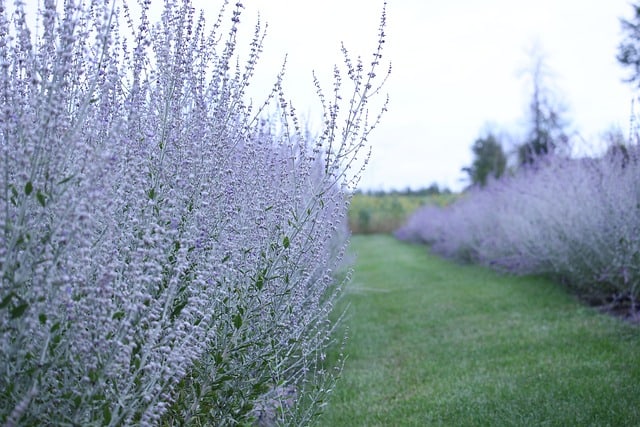
Russian Sage can be planted in July and adds beautiful silvery foliage and purple spikes to your landscape. It is drought-tolerant and low-maintenance.
Temperature Tolerance: Prefers warm temperatures, thriving optimally above 70°F.
Growing Tips: Ensure they have plenty of sunlight and well-drained soil to perform their best.
Hosta

Hostas can be planted in July; these shade-loving perennials are ideal for gardens with limited sun exposure. They offer stunning foliage and beautiful flowers.
Temperature Tolerance: Best in moderate temperatures between 60°F and 75°F.
Growing Tips: Plant in rich, organic soil with plenty of moisture. Mulching will help retain soil moisture for these plants.
Black-eyed Susans

As mentioned earlier, Black-eyed Susans are excellent for adding color and wildlife to your garden. Planting them in July can provide an exuberant late summer display.
Temperature Tolerance: They thrive best at temperatures from 70°F to 80°F.
Growing Tips: They prefer full sun and well-drained soil. Deadheading can encourage additional blooms.
Butterfly Bush
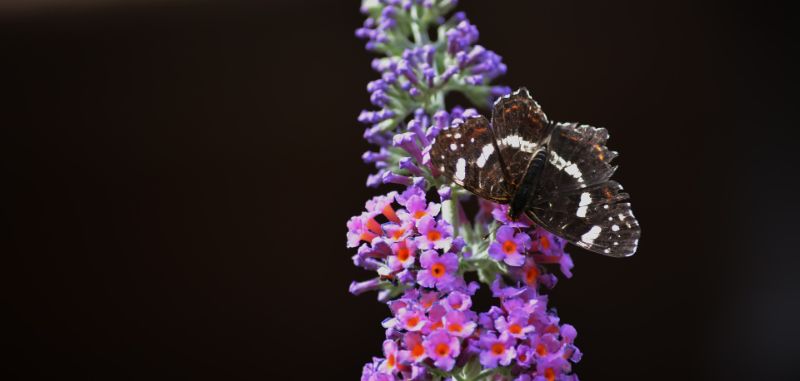
July is a great time to plant Butterfly Bush, which is loved by pollinators and will bring movement and color to your landscape.
Temperature Tolerance: Thrives in warmer weather, ideally between 70°F and 90°F.
Growing Tips: Plant in well-drained soil and full sun for best results. Prune after blooming to encourage new growth.
Astilbe

Astilbe is ideal for semi-shaded areas of your garden and can bring bursts of pink, white, or red blooms. It’s an excellent addition during July.
Temperature Tolerance: Prefers moderate temperatures, thriving best between 60°F and 75°F.
Growing Tips: Keep soil consistently moist and provide some shade to protect these beauties from direct afternoon sun.
Bleeding Heart
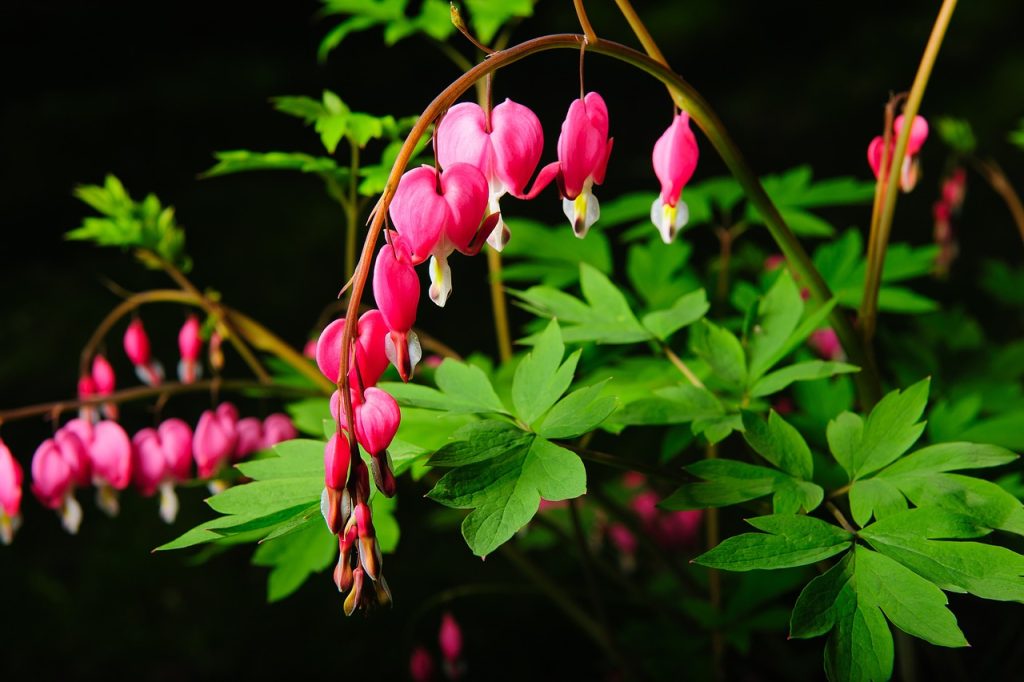
Bleeding Heart can be planted in July. Known for their heart-shaped flowers, they thrive in shaded gardens and add a lovely aesthetic.
Temperature Tolerance: They prefer cooler temperatures, ideally from 60°F to 70°F.
Growing Tips: Plant in rich, moist soil. Regular watering is essential to keep the roots hydrated.
Sedge
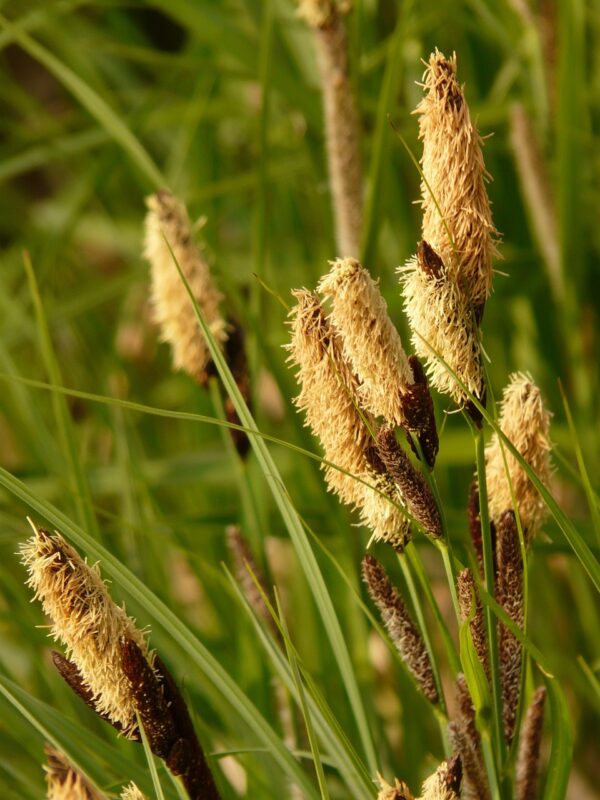
Sedge grasses can be interspersed throughout your landscape for texture and movement. They can thrive even in low-maintenance zones.
Temperature Tolerance: Generally thrive well in a variety of temperatures, ideally between 60°F and 80°F.
Growing Tips: Adapts to different light and moisture levels, making them versatile.


